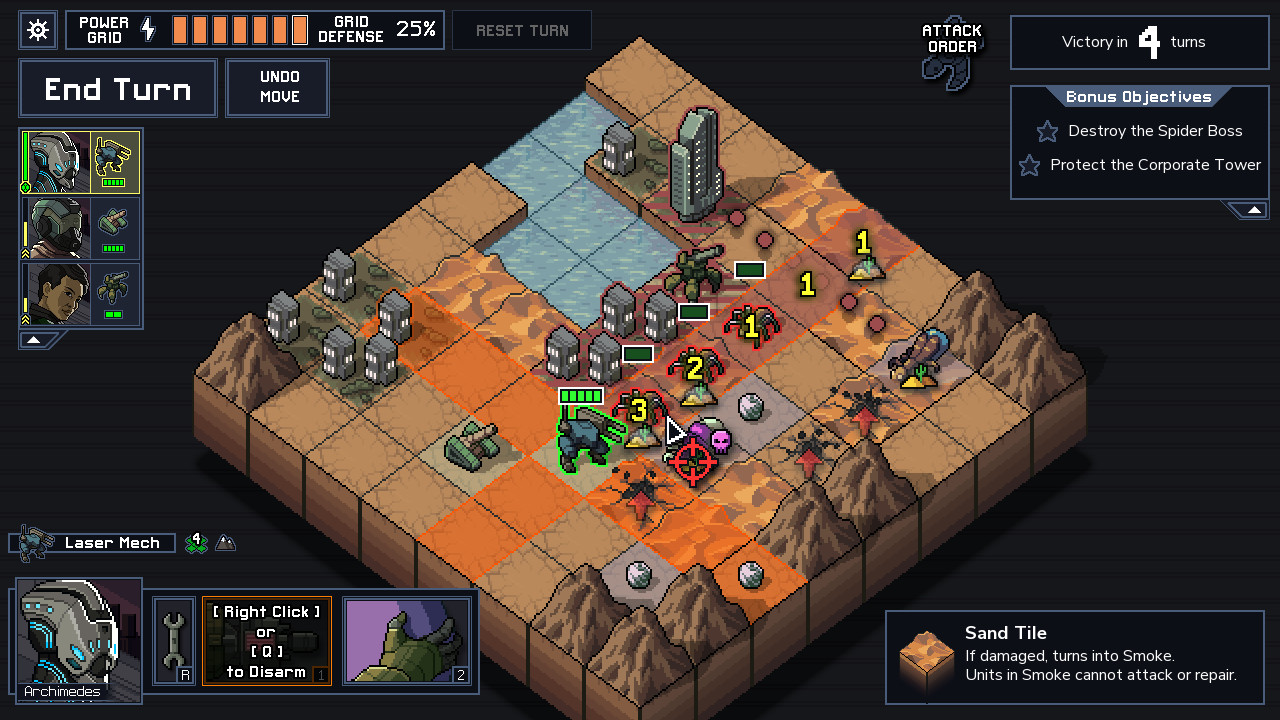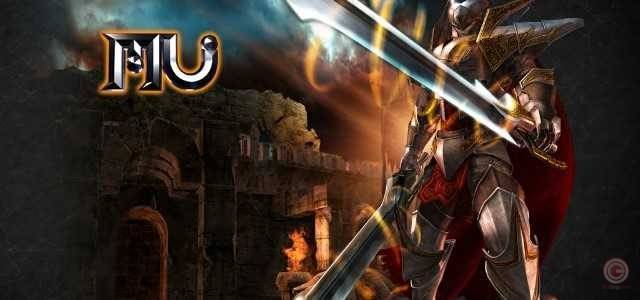
Into The Breach Game Review
The Rusting Hulks—not exactly the most inspiring name for humanity’s saviors. And yet that sad group of orange-colored mechs finally got the deed done. It was around 4 a.m. We’d battled our way across two islands full of giant bugs, entered their volcanic lair, and were on the verge of killing off the Vek leader, a moth probably fifty feet long. Doing so would secure the bomb we’d warped in here, saving the Earth.I knew what I had to do. With my jet already on fire, I fired a missile at the Vek, enfolding it in smoke. Blinded, the Vek halted its attack and slowly succumbed to the dark cloud.
The threat was over. Humanity was saved.“Smoking kills,” I said, as the bomb detonated and brought the volcano down on the Vek swarm.
Bug-out bagOr I would’ve said that, if I’d thought of it, and also if this were an ‘80s action film—but I didn’t, and it’s not one. It’s Into the Breach, the new turn-based tactics game from Subset, developers of FTL: Faster than Light. IDG / Hayden DingmanInto the Breach begins with the end of humanity. The Vek, a subterranean race of giant bugs, swarms out of the ground and kills everyone on Earth. And that’s it! Party’s over.Luckily, time travel exists. There’s enough power to send a squad of mechs back to the earliest moments of the Vek onslaught.
Into the Breach borrows confidently from FTL's successes, but differentiates itself as a tight, highly replayable tactics game built around avoiding non-combatant casualties and collateral damage. Into the Breach review: Chess meets Starship Troopers in brilliant, bite-sized battles An excellent puzzle game masquerading as a turn-based tactics game. By Hayden Dingman.
Humanity gets one more shot, one final run—unless you screw this timeline up too, in which case the whole process repeats again. And again.It’s a pretty ingenious setup for a run-based game like Into the Breach.
Inconsequential, maybe—just an excuse for an enemy. But it’s good pulpy fun, and lends the game a great Pacific Rim sort of vibe, big ol’ mechs punching big ol’ monsters, with entire skyscrapers and electrical plants and rocket launchpads caught in the crossfire. IDG / Hayden DingmanAnyway, the core of the game is the actual tactics, and it’s here that Into the Breach really shines.
You start with a single team, the Rift Walkers. It’s a pretty basic squad, with one Iron Giant-looking mech, one tank, and one artillery launcher. And they behave.pretty much exactly as you’d expect. The Iron Giant-looking one punches enemies, the tank shoots in a straight line, and the artillery lobs missiles across the map.As you proceed you’ll unlock additional squads, most of which have some quirk. My favorite squad, the Rusting Hulks, revolves around electrified smoke that both cancels enemy attacks and causes damage between turns. Another, Blitzkrieg, involves chaining lightning attacks through groups of enemies.
The instinct is to think of these as “more powerful” squads, but they’re not. In fact, many of them are harder to play, and should probably be thought of as additional challenges, twists on the core formula.No matter which squad you choose, your goal is to protect what’s left of humanity, which is spread across four islands. The first and most basic is the “Historical Archive,” a museum of old-Earth technology. And, appropriately, your missions mostly require you to protect that tech—rusted out tanks, archaic missile launchers, et cetera. Later islands are themed around the desert, snow, and uh.acid-swamps. IDG / Hayden DingmanEach island consists of eight zones/combat arenas, of which you need to finish five before triggering the boss of that island. Combat is played out on an eight by eight grid, with maps randomized each time.
Your goal is to complete whatever objective you were assigned (say, protecting the aforementioned pair of old tanks), while also minimizing damage to the human buildings that dot the map. Every building damaged decreases your power meter, and if the meter reaches zero you lose—the Vek surface again en masse, you evacuate, and you start over from scratch.What’s hooked me most about Into the Breach is it feels more like a puzzle game than a traditional tactics game. Turn-based tactics always borders on the edge of a puzzle game, but most also take inspiration from traditional tabletop roleplaying or wargames.
Someone moves, then the next person responds, then that person responds to the first two player’s moves, and so on.Into the Breach is different. Every turn, it tells you exactly what the enemy will do next. “The giant scorpion’s going to attack this building, the beetle-looking thing will run in a straight line towards this one, and this wasp is going to attack your tank.” IDG / Hayden DingmanThis foreknowledge becomes important because you can move enemies around. Many of your attacks push or pull opponents in addition to (or instead of) dealing out damage. If there’s a giant scorpion set to attack a building next turn, sure, you could kill it.or you could just push it one square up so that it now misses its target. When you adjusted the scorpion’s position, you also adjusted where its attack would land.Enemies attack no matter what, so you can also force enemies into attacking each other, or block their attack with your own mech—better to take damage there than to lose a building full of civilians.
Ground-based enemies can even be pushed off cliffs or into water, or into each other, causing damage to both. In other words, there are a range of tactics that go beyond simply “Hit the enemy until it dies.”What I find even more interesting though is that Into the Breach seems to approach every turn as a scenario you can “solve.” Not always. There have been a few occasions where I had to take damage, had to sacrifice a mech or a building because of bad positioning. But even when outnumbered, Into the Breach seems to make a conscious effort to array enemies in ways where a skilled player could emerge unscathed. IDG / Hayden DingmanLet’s say you have five enemies and just your core three mechs. A traditional turn-based game, the AI would approach that situation knowing you’re outnumbered, and exploit that fact. Into the Breach, though, will often have three enemies attack buildings and the other two planning to attack your mechs.

Move your mechs out of those tiles and those two attacks are automatically rendered useless, meaning you only really have three enemies to deal with that turn.That’s what makes Into the Breach feel most like a puzzle game—that remarkable, almost uncanny, commitment to fairness. A careful player could probably beat Into the Breach on their first try. It’d take some doing, and it’s unlikely anyone would master every system that early. But I think you could do it, because Into the Breach stacks the deck in the player’s favor.
It’s the exact opposite approach compared to FTL, where it was fairly easy to reach the end, but then the final boss would stomp all over even experienced players. In Into the Breach, even the climactic battle encourages slow, thoughtful play. Take your time, analyze your enemy’s attack patterns, and you’ll be fine.Humanity will thank you.Bottom lineIt’s very good. Addictive, too. I love other turn-based games, be it or or, but traditionally the genre is a time-sink.
You can’t just “drop in” to XCOM for a night. You start a game knowing it’s going to take 20 or 30 hours to conclude. It’s a commitment.Into the Breach provides the same satisfaction on a smaller scale. It’s turn-based tactics distilled, a bite-sized version that still manages to have deep and complicated combat systems to discover within its otherwise-limited scope.
Turns out, that’s exactly what I want.
